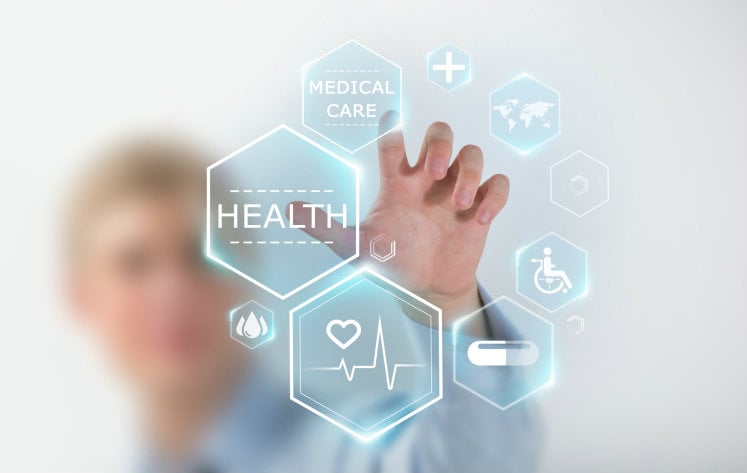Healthcare RCM: Optimize Earnings Cycle Administration for Better Results
Healthcare RCM: Optimize Earnings Cycle Administration for Better Results
Blog Article
A Comprehensive Guide on Exactly How Health Care RCM Works to Streamline Invoicing and Collections
Browsing the intricacies of healthcare earnings cycle monitoring (RCM) is vital for service providers intending to boost their invoicing and collections procedures. The guide unpacks the ins and outs of RCM, from patient registration to receivables management, providing understandings into enhancing each step. Incorporating sophisticated innovation and standard procedures can dramatically minimize insurance claim denials and increase repayment cycles. Yet, the true obstacle depends on flawlessly combining these components to boost capital. As we check out the core parts and methods that drive effectiveness, one inquiry remains: how can health care entities ideal placement themselves to flourish monetarily in an ever-evolving sector?
Comprehending Profits Cycle Monitoring
Realizing the complexities of Earnings Cycle Administration (RCM) is necessary for medical care companies intending to optimize their financial efficiency. RCM is an essential administrative function that incorporates the whole economic procedure of client treatment, from the preliminary appointment readying to the final repayment of the balance. It is an intricate treatment developed to recognize, collect, and take care of the earnings from the services given to individuals. Effective RCM ensures that health care providers obtain accurate and timely repayments, reducing the danger of earnings loss and improving capital.
The RCM procedure begins when an individual routines a consultation and extends with the client's treatment trip, including payment and collections. A vital purpose is to minimize the time between supplying a solution and getting payment, therefore enhancing the organization's financial health. RCM includes different functions such as patient enrollment, insurance coverage verification, cost capture, coding, claims submission, repayment posting, and taking care of allures and rejections.
Trick Elements of RCM
In the world of Income Cycle Monitoring (RCM), recognizing its vital components is essential to achieving monetary performance within health care companies. RCM is a detailed process that incorporates numerous phases, each essential to ensuring reliable billing and collections. The key elements include client enrollment, insurance coverage confirmation, fee capture, coding, claim submission, repayment uploading, and balance due monitoring.


Once coded, claims are sent to payers, where accuracy is vital to prevent denials or hold-ups - Healthcare RCM. Repayment posting entails videotaping the received repayments, which enables the reconciliation of accounts. Lastly, accounts receivable administration concentrates on monitoring and resolving unsettled insurance claims, making certain prompt follow-up and resolution
Each component of RCM is adjoined, and inadequacies in any type of part can interrupt the whole cycle. For that reason, mastering these elements is necessary for health care companies to enhance earnings and improve their financial health.
Techniques for Efficient Payment

Systematizing billing procedures throughout the company is one more key technique. Developing clear standards for paperwork, coding, and entry aids keep consistency and conformity with governing requirements. Training personnel frequently on these treatments guarantees everybody is updated with the most up to date adjustments in invoicing codes and payer policies.
Exact cost capture is crucial in stopping profits leak. Applying regular audits and monitoring systems enables for the recognition and adjustment of inconsistencies before they impact profits. Additionally, preserving open lines of interaction with payers helps to quickly resolve any kind of disagreements or misunderstandings that may emerge.

Last but not least, engaging people early in the payment process by giving clear estimates and educational materials about their economic responsibilities can substantially minimize complication and enhance payment timeliness. These methods jointly add to a much more economically healthy and balanced and reliable invoicing system.
Enhancing Collections Procedures
A durable collections process is important for preserving monetary security within health care organizations. Given the intricacies of clinical billing and the variety of payer needs, improving the collections process involves applying strategic steps that make sure accurate and prompt payment of solutions made. Central to this is making use of technology to automate and improve processes, decreasing hands-on mistakes and improving efficiency. Automation tools can aid in tracking insurance claim standings, sending out prompt suggestions to individuals, and handling rejections better.
Educating personnel to understand the nuances of insurance coverage and find out here now billing codes is just as essential. This knowledge equips them to address billing disparities rapidly and communicate effectively with clients concerning their monetary responsibilities. Moreover, transparent and clear person communications are important. Providing comprehensive descriptions of charges and supplying flexible layaway plan can enhance client fulfillment and punctual settlements.
Regular audits of the collections procedure must be conducted to recognize locations for improvement and make sure compliance with policies. By assessing data, health care companies can recognize patterns, prepare for potential concerns, and adapt strategies as necessary (Healthcare RCM). Inevitably, a well-enhanced collections process not just sustains financial health however additionally adds to a much more smooth experience for patients and team alike
Optimizing Revenue Streams
Building upon the foundation of a strong collections process, healthcare companies can further reinforce their monetary security by purposefully optimizing income streams. This involves a multi-faceted technique, starting with an extensive analysis of existing earnings resources to recognize inadequacies and locations for development. Using sophisticated information analytics tools allows organizations to gain insights right into payer mix, individual demographics, and service usage patterns, permitting data-driven decisions that improve income capture.
Executing automated invoicing systems can considerably minimize errors and speed up cases refining, making sure that profits is gathered much more efficiently. In addition, optimizing payer agreements via normal negotiations can improve repayment rates and terms, straight influencing the bottom line. Diversifying service offerings, such as including telehealth or wellness programs, can likewise bring in a more comprehensive person base, hence enhancing income possibility.
One more vital component is enhancing patient involvement and contentment, as completely satisfied individuals are much more likely to stick to treatment strategies and make timely repayments. Offering adaptable settlement options and transparent payment practices can improve collections and foster person loyalty. Healthcare RCM. By adopting these methods, healthcare companies can develop check that an extra resistant monetary framework, making sure sustained growth and stability in an ever-changing sector landscape
Final Thought
Finally, health care Profits Cycle Administration (RCM) plays a critical duty in enhancing payment and collections processes by incorporating key elements such as patient enrollment, insurance confirmation, charge capture, coding, claims submission, and accounts receivable administration. By utilizing advanced technology, systematizing procedures, and fostering client engagement, medical care service providers can dramatically reduce case denials, speed up payment cycles, and enhance capital. This detailed technique to RCM ultimately leads to enhanced monetary efficiency and sustainability for medical care organizations.
The RCM process begins when an individual schedules a visit and extends with the person's treatment trip, consisting of invoicing and collections.An additional vital component is improving patient involvement and contentment, as satisfied individuals are much more likely to adhere to therapy plans and make prompt repayments. Using versatile payment alternatives and transparent payment techniques can enhance collections and foster patient commitment.In verdict, healthcare Earnings Cycle Management (RCM) plays an essential function check my site in maximizing payment and collections processes by integrating essential parts such as individual enrollment, insurance verification, fee capture, coding, asserts submission, and accounts receivable management. By using innovative modern technology, systematizing treatments, and promoting client interaction, healthcare providers can significantly minimize insurance claim rejections, accelerate payment cycles, and boost money circulation.
Report this page